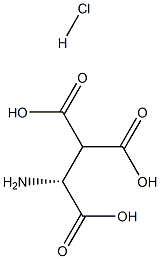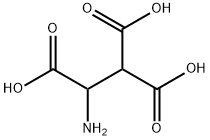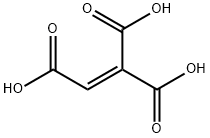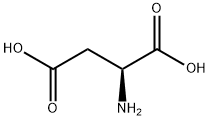
DL-Aspartic acid synthesis
- Product Name:DL-Aspartic acid
- CAS Number:617-45-8
- Molecular formula:C4H7NO4
- Molecular Weight:133.1

617-48-1
323 suppliers
$16.60/100G

617-45-8
452 suppliers
$5.00/25g
Yield:617-45-8 27%
Reaction Conditions:
with ammonium hydroxide;hydrogen at 219.84; under 7500.75 Torr; for 2 h;Autoclave;Alkaline conditions;
Steps:
Catalytic Activity Evaluation
General procedure: The catalytic transformation of lactic acid andother biomass-derived acids was performed in an autoclave. For example, forthe conversion of lactic acid, the Ru/CNT catalyst and lactic acid were added to the reactor that had been precharged with aqueous ammonia. After theintroduction of H2 at a pressure of 1 MPa, the reactor was placed in a metaljacket wafer on an electronic hotplate (typically 493 K). After a fixed time,the reaction was quickly terminated by cooling the reactor to room temperaturein cold water. The catalytic transformation of glucose to lacticacid was performed in a round-bottom flask with Schlenk line. Degassedwater was added to the reactor that had been precharged with glucose andBa(OH)2 under N2 atmosphere. The flask was put in an oil bath on an electronicstirrer. After a fixed time, the liquid product was neutralized withsulfuric acid and filtered to remove Ba2+. The filtrate was added equal mole ofNaOH to prevent organic acids lose during freeze-dry. After freeze-drying, theproducts were acidified with HCl and used as the substrates in the aminationstep. The liquid products were analyzed by HPLC (Shimazu LC-20A) equippedwith both RI and UV detectors. Glucose and hydroxyl acids were quantifiedon an Agilent Hi-Plex H column (7.7 × 300 mm, 8 μm) using a dilute H2SO4aqueous solution as the mobile phase, whereas amino acids were analyzed ona Poroshell 120 EC-C8 column (4.6 × 100 mm) by using a precolumn derivatizationmethod, where ortho-phthalaldehyde was used as the derivatization reagent.The dehydrogenation of isopropanol (IPA) over Ru and Pd catalysts was performed in a fixed bed flow reactor equipped with an online gaschromatography (GC, Agilent 7890A). A flame ionization detector (FID) andan Agilent Cyclodex-B column (30 m × 250 μm × 0.25 μm) were used todetect and analyze IPA and gas products.
References:
Deng, Weiping;Wang, Yunzhu;Zhang, Sui;Gupta, Krishna M.;Hülsey, Max J.;Asakura, Hiroyuki;Liu, Lingmei;Han, Yu;Karp, Eric M.;Beckham, Gregg T.;Dyson, Paul J.;Jiang, Jianwen;Tanaka, Tsunehiro;Wang, Ye;Yan, Ning [Proceedings of the National Academy of Sciences of the United States of America,2018,vol. 115,# 20,p. 5093 - 5098]
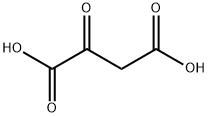
328-42-7
272 suppliers
$8.00/250mg

617-45-8
452 suppliers
$5.00/25g
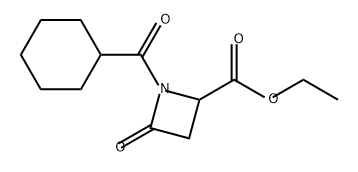
103898-05-1
0 suppliers
inquiry

617-45-8
452 suppliers
$5.00/25g
![Propanedioic acid, [2-oxo-5,6-diphenyl-4-[(phenylmethoxy)carbonyl]-3-morpholinyl]-, bis(phenylmethyl) ester, [3R-(3α,5α,6α)]- (9CI)](/CAS/20210305/GIF/111934-07-7.gif)
